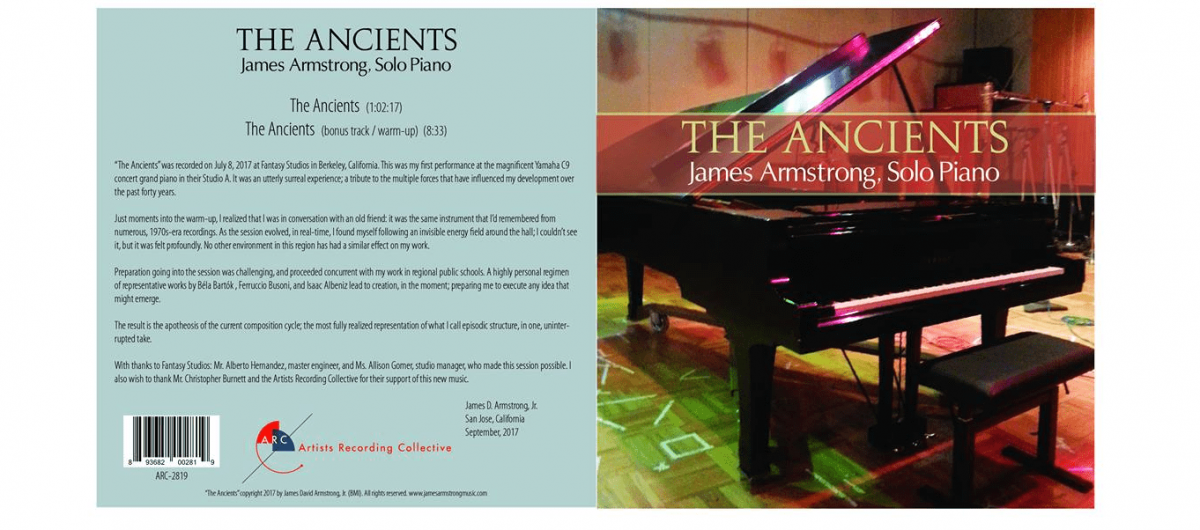It’s Jazz History month, and I’ve found myself backtracking on classic recordings by McCoy Tyner. His sessions on Milestone especially propelled me through midterm and final exams at the University of California, Santa Barbara, which did not have a “jazz” program in the 1970s. I’d lock myself in the university practice rooms and sit at their battered Baldwin Hamilton upright pianos for several hours at a time, reducing what I heard to what were, admittedly, very primitive transcriptions of this highly complex music. To be sure, I was an outlier, far removed from the classical music students of the era. I loved it.
In an interview that’s since been posted to YouTube, McCoy’s long-time colleague, the great saxophonist and composer Gary Bartz made a comment to the effect that some music students simply can’t hear. As I understood it, he meant that many aspiring and/or developing musicians are largely beholden to written scores, with tentative improvisational ability, at best.
Sitting in with a local rehearsal group just recently, I was rather surprised to observe, in real-time, a group of adult musicians unable to disregard their scores and perform, with reasonable accuracy, a piece of music from auditory memory, without reference to a written score, in two dimensions. Which leads to the central theme; the degree to which auditory memory can be developed, through close listening, over an extended period.
Alfred McCoy Tyner, who passed in 2020, is among the very best teachers. I attended several of his performances here in the Bay Area, starting in the early 1980s, but never sat in with him, in a masterclass, or otherwise. I believe that there are too many theoretical constructs that have been introduced by academia since then that detract from really close listening. It’s an acquired skill.
Here’s a real-time interpretation of McCoy’s piece, “Smitty’s Place”, from the Blue Note album, “Expansions”. https://youtu.be/FsIQ26UbRfM Please note that there’s no written score. The powerful wall of sound reveals a 32 bar form based on “rhythm” changes. The underlying key center is B flat, and the tempo is beyond three hundred beats per minute. There, the similarities end. Make no mistake about it: McCoy and his colleagues are quite literally blazing new terrain, in 1968. Fifty-five years ago.
Techniques along these lines scare the heck out of a lot of people here. The idea of superimposing foreign harmonies on underlying changes and/or tonal centers is uncharted territory. George Russell was showing us how to evolve in this direction at least a decade before this recording. Coltrane, McCoy, and others had already absorbed these concepts.
In an April 23, 2023 conversation on Facebook, the composer and saxophonist Christopher Burnett remarked, “…most United States universities and conservatories don’t offer harmony and theory courses past a certain period of ancient European classical music. It’s funny because the European institutions are past that themselves and study our music deeper than we do in academia.”
My response followed –
Perhaps that’s the underlying issue; attempting to reconcile all auditory instances with an underlying harmony, diatonic, or otherwise. Detailed counterpoint in J.S. Bach to Ferruccio Busoni leads to a certain conclusion. From Andrew Hill, you and I know that rhythm is a top-level domain. It follows that anything that you might hear relates to a rhythm, or any number of cross-rhythms including hemiola (3 against 2). Bartók was acutely aware of this phenomena. It’s evident in his piano music, including the Three Burlesques.
All of this leads to the idea that developing musicians especially should consider means of expression that might appear counter to their previous training, or tutelage. Certainly, continue to review written scores, and transcriptions. However, also search for historically significant recordings and listen to them, carefully, with the idea of developing auditory memory.
James D. Armstrong, Jr.
April 23, 2023

